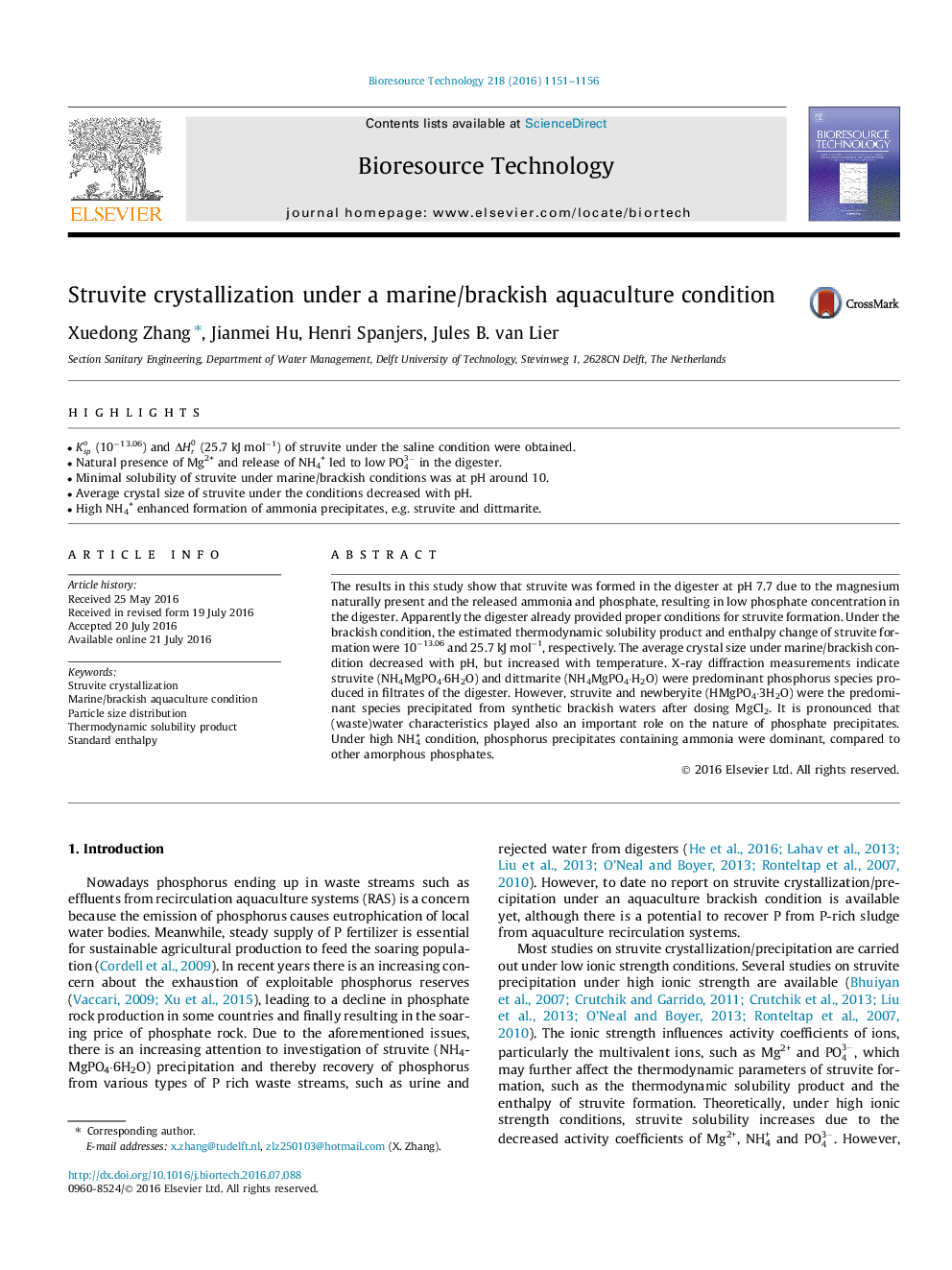| Article ID | Journal | Published Year | Pages | File Type |
|---|---|---|---|---|
| 7070415 | Bioresource Technology | 2016 | 6 Pages |
Abstract
The results in this study show that struvite was formed in the digester at pH 7.7 due to the magnesium naturally present and the released ammonia and phosphate, resulting in low phosphate concentration in the digester. Apparently the digester already provided proper conditions for struvite formation. Under the brackish condition, the estimated thermodynamic solubility product and enthalpy change of struvite formation were 10â13.06 and 25.7 kJ molâ1, respectively. The average crystal size under marine/brackish condition decreased with pH, but increased with temperature. X-ray diffraction measurements indicate struvite (NH4MgPO4·6H2O) and dittmarite (NH4MgPO4·H2O) were predominant phosphorus species produced in filtrates of the digester. However, struvite and newberyite (HMgPO4·3H2O) were the predominant species precipitated from synthetic brackish waters after dosing MgCl2. It is pronounced that (waste)water characteristics played also an important role on the nature of phosphate precipitates. Under high NH4+ condition, phosphorus precipitates containing ammonia were dominant, compared to other amorphous phosphates.
Related Topics
Physical Sciences and Engineering
Chemical Engineering
Process Chemistry and Technology
Authors
Xuedong Zhang, Jianmei Hu, Henri Spanjers, Jules B. van Lier,
